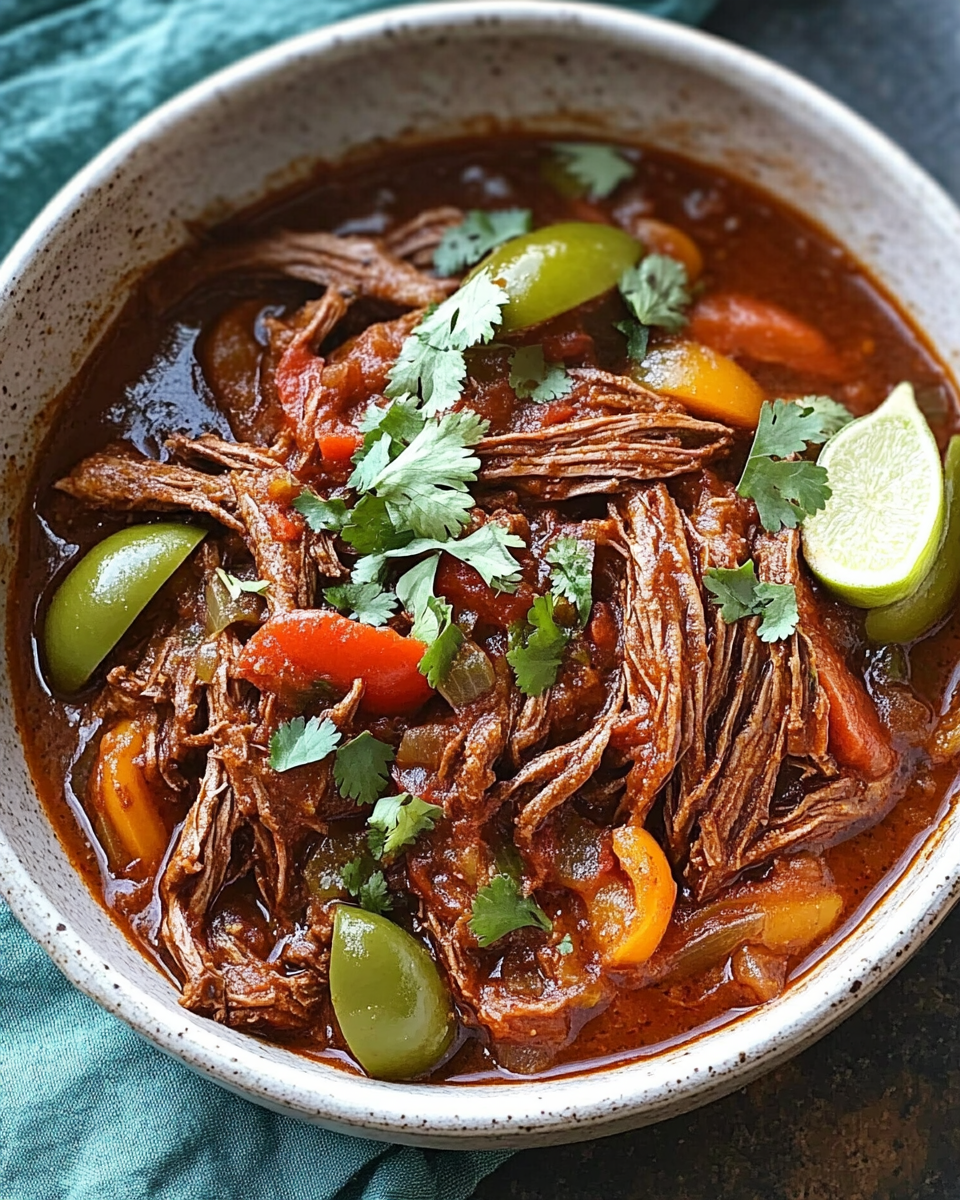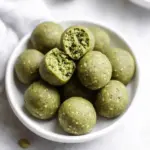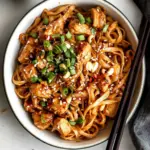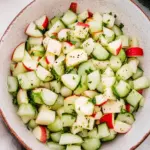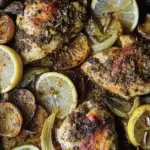The Cuban Ropa Vieja brings together rich layers of flavor with tender shredded beef in a savory tomato pepper sauce that captures the essence of classic Cuban comfort food. Each forkful offers a delicious mix of spices, olives, peppers, and beef, simmered slowly to ensure the meat is fall-apart tender while soaking up every bit of flavor. This dish is perfect for serving with fluffy white rice and sweet fried plantains, making it a comforting meal for family gatherings, weekend feasts, or meal prepping for the week ahead. The warm aroma that fills your kitchen while cooking will transport you straight to Havana, reminding you of how food can deeply connect us to culture and tradition.
Full Recipe:
Ingredients:
-
2 lbs flank steak
-
1 onion, thinly sliced
-
1 green bell pepper, sliced
-
1 red bell pepper, sliced
-
4 cloves garlic, minced
-
1 can (15 oz) crushed tomatoes
-
1/4 cup tomato paste
-
1/4 cup green olives, sliced
-
1/4 cup red wine
-
2 cups beef broth
-
2 teaspoons ground cumin
-
1 teaspoon smoked paprika
-
1 teaspoon dried oregano
-
2 bay leaves
-
2 tablespoons olive oil
-
Salt and pepper to taste
-
Fresh cilantro for garnish
Directions:
-
Season the flank steak with salt and pepper. In a large pot, heat olive oil over medium-high heat, then sear the steak on both sides until browned. Remove and set aside.
-
In the same pot, add onions and bell peppers, sautéing until softened. Add garlic and cook for another minute.
-
Stir in tomato paste, crushed tomatoes, red wine, cumin, paprika, oregano, and bay leaves.
-
Return the steak to the pot, pour in beef broth, and bring to a boil. Reduce heat, cover, and simmer for 2–3 hours until the beef is tender.
-
Remove the steak, shred using two forks, and return the shredded beef to the pot. Add green olives, stir, and simmer for an additional 15 minutes.
-
Adjust seasoning with salt and pepper, garnish with fresh cilantro, and serve warm with rice or plantains.
Prep Time: 15 minutes | Cooking Time: 3 hours | Total Time: 3 hours 15 minutes
Kcal: 415 kcal | Servings: 6 servings
Discovering Cuban Ropa Vieja: The Soul of Cuban Home Cooking
Cuban Ropa Vieja is more than just a dish; it is a symbol of Cuba’s resilient culture, warm family traditions, and deep culinary heritage passed down through generations. This slow-cooked shredded beef in a vibrant tomato pepper sauce reflects the simplicity and ingenuity of Cuban cuisine, transforming affordable cuts of beef into a meal that is rich, comforting, and layered with flavor.
In this in-depth exploration, we will delve into the origins, cultural significance, flavor profile, serving suggestions, nutritional aspects, and creative variations of Cuban Ropa Vieja, helping your readers understand why it remains a timeless classic worth adding to their kitchen rotation.
The Origins and Cultural Significance of Ropa Vieja
Ropa Vieja, which translates to “old clothes” in Spanish, gets its name from the appearance of the shredded beef strands resembling torn, worn fabric. Its origins trace back to the Canary Islands, where Spanish settlers brought the dish to Cuba. Over time, Cuban cooks infused it with their local influences, adding peppers, olives, spices, and a tomato-based sauce that embodies the Caribbean’s bold flavors.
In Cuban households, Ropa Vieja is often served during family gatherings and special occasions, symbolizing togetherness, warmth, and the essence of “sobremesa” – the cherished time spent at the table after a meal, sharing stories and laughter.
A Flavorful Profile That Warms the Soul
The beauty of Cuban Ropa Vieja lies in its depth of flavor achieved by slow cooking the beef until it becomes tender enough to shred effortlessly while soaking up the aromatic spices and sauce. The combination of bell peppers, onions, garlic, and tomatoes creates a rich, savory base, while green olives and a touch of wine add subtle briny and acidic notes that cut through the richness.
Spices such as cumin, paprika, oregano, and bay leaves layer in warmth and complexity, ensuring every bite bursts with Cuban flavors. Finished with fresh cilantro for a bright lift, this dish becomes a comforting, soulful meal that feels like a warm embrace from a grandmother’s kitchen.
Serving Suggestions for a Complete Cuban Experience
Traditionally, Ropa Vieja is served with fluffy white rice, allowing the rice to absorb the delicious sauce, and sweet fried plantains to add balance with their caramelized sweetness. A side of black beans or tostones (twice-fried green plantains) adds texture and completes the meal.
To enhance presentation for your audience, encourage serving Ropa Vieja in a rustic clay dish with fresh cilantro and lime wedges on the side for a pop of color and freshness. For gatherings, it can be served family-style, allowing everyone to dig into the tender beef and flavorful sauce, reinforcing the communal dining spirit of Cuban culture.
Nutritional Benefits of Ropa Vieja
While comforting and hearty, Ropa Vieja offers several nutritional benefits when enjoyed in moderation. The beef provides a good source of protein, iron, and essential B vitamins, while the tomatoes and peppers supply antioxidants, vitamins A and C, and dietary fiber.
To keep the dish balanced, serve it with a generous portion of vegetables or a fresh side salad, and use lean cuts of beef with minimal trimming of fat. Those following a low-carb lifestyle can enjoy Ropa Vieja over cauliflower rice or alongside sautéed greens for a satisfying and wholesome meal.
Variations and Creative Twists
One of the reasons Ropa Vieja remains a beloved classic is its versatility. While the traditional recipe uses flank steak, some variations use brisket, chuck roast, or skirt steak depending on availability and desired tenderness.
For a spicier kick, add a finely chopped jalapeño or a dash of cayenne pepper to the sauce. For a smoky twist, consider adding chipotle peppers in adobo sauce to the tomato mixture. Vegetarians can recreate the flavors using jackfruit or shredded oyster mushrooms in place of beef while maintaining the seasoning profile and cooking method for a satisfying plant-based option.
Another popular adaptation is serving Ropa Vieja as a taco filling with warm corn tortillas, pickled onions, and avocado slices, or using it as a sandwich filling in Cuban rolls with melted cheese and a drizzle of hot sauce for a comforting, portable meal.
Why You Should Add Cuban Ropa Vieja to Your Recipe Collection
Adding Ropa Vieja to your website’s collection will resonate with readers seeking comforting, culturally rich recipes that are straightforward yet deliver complex flavors. It is an excellent weekend meal prep option as it tastes even better the next day, making it perfect for batch cooking.
Additionally, it allows your readers to explore Cuban cuisine in an approachable way, inspiring them to learn about the stories and traditions behind each dish while expanding their cooking repertoire with flavors from the Caribbean.
Tips for Perfecting Ropa Vieja at Home
-
Take your time: Low and slow cooking is essential for achieving tender, flavorful beef.
-
Use quality spices: Fresh cumin, smoked paprika, and oregano will elevate the final dish.
-
Sear the beef well: Browning the meat before simmering adds depth to the sauce.
-
Rest before serving: Letting the dish sit after cooking allows the flavors to meld further.
-
Double the recipe: Leftovers reheat beautifully and are ideal for quick meals throughout the week.
Conclusion:
Cuban Ropa Vieja is more than a recipe; it is a culinary experience that brings people together, rooted in tradition while adaptable for modern kitchens. Its tender shredded beef, vibrant sauce, and layered spices make it a dish that comforts, nourishes, and invites connection at the dining table.
Whether your readers are exploring international cuisines, looking for a new meal prep staple, or simply seeking a comforting dinner to share with loved ones, Cuban Ropa Vieja will add warmth and authenticity to their kitchens.

